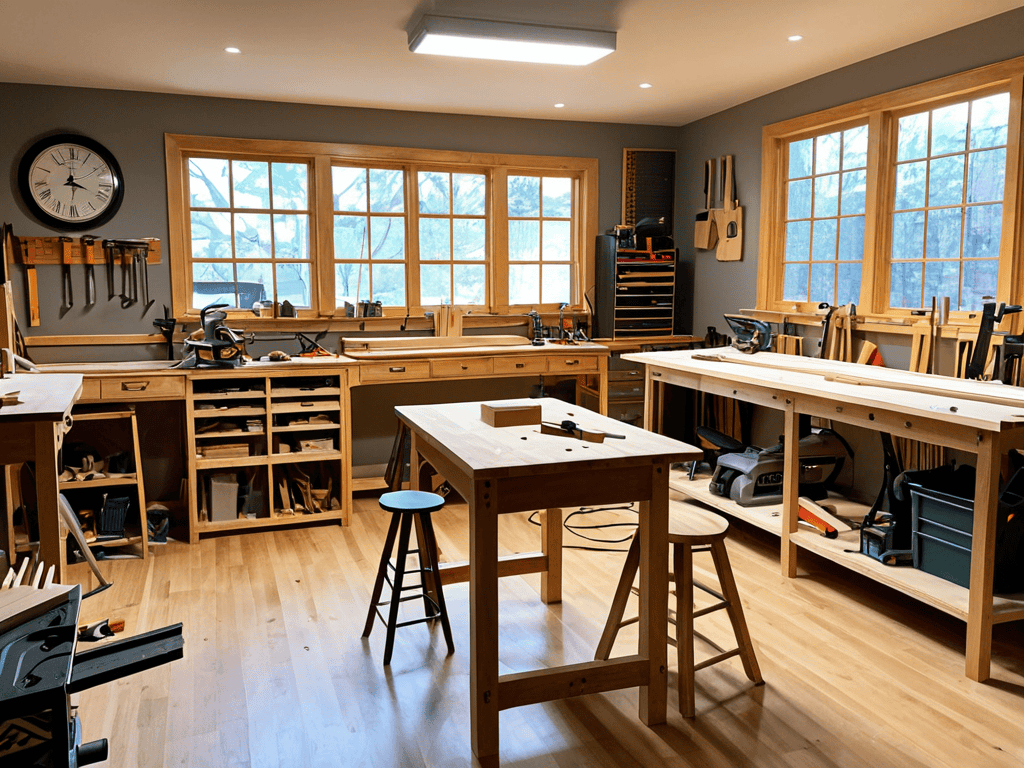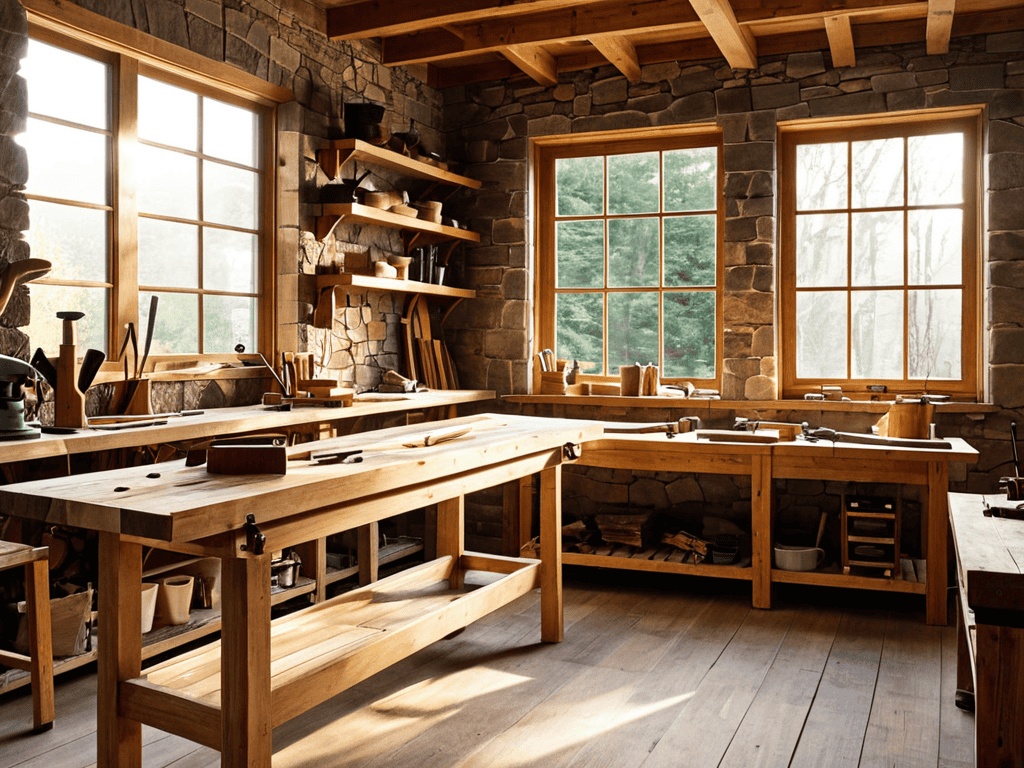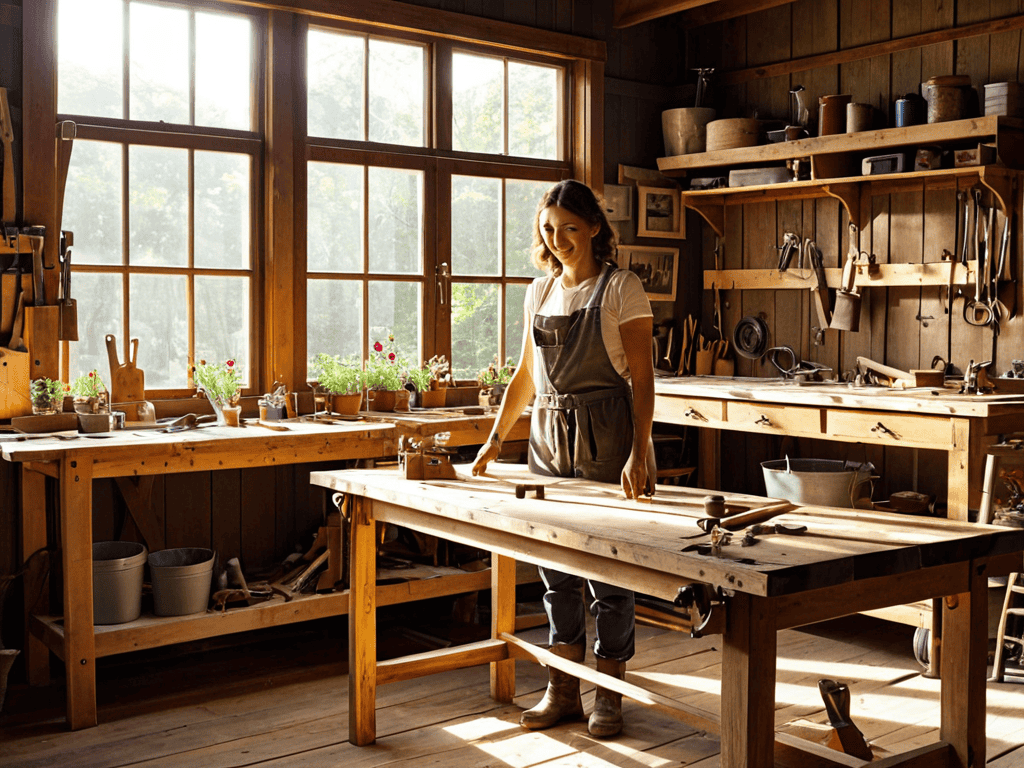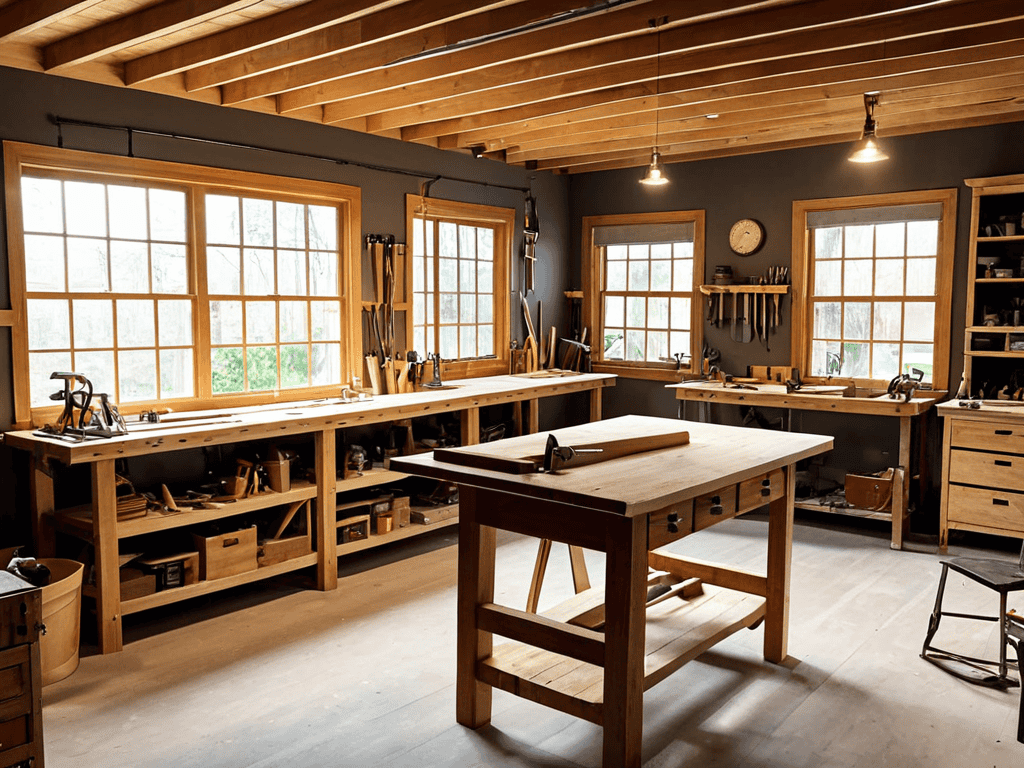I still remember the first time I attempted to build my own DIY furniture – it was a humble wooden stool, but the sense of accomplishment I felt was overwhelming. As I sat on my newly crafted stool, I realized that the process of creating something with my own hands was not just about saving money, but about infusing my home with character. This experience sparked a passion within me to explore the world of DIY furniture, and I’ve since discovered that it’s not just about following instructions, but about unleashing my creativity.
In this article, I’ll share my personal journey and practical advice on how to create your own DIY furniture. You’ll learn how to bring your ideas to life, from selecting the right materials to adding those special touches that make a piece truly unique. I’ll guide you through the process, sharing my own trials and tribulations, as well as the tips and tricks I’ve learned along the way. By the end of this guide, you’ll be equipped with the confidence and knowledge to start creating your own DIY furniture, and transforming your living space into a reflection of your personality and style.
Table of Contents
Guide Overview: What You'll Need

Total Time: 2 hours 30 minutes
Estimated Cost: $50 – $100
Difficulty Level: Intermediate
Tools Required
- Circular Saw (for cutting lumber)
- Drill Press (for precise drilling)
- Sander (for smoothing out wood surfaces)
- Tape Measure (for accurate measurements)
- Level (for ensuring level installation)
- Clamp (for holding pieces together)
- Hammer (for tapping pieces into place)
- Pencil (for marking cut lines)
Supplies & Materials
- 2-in x 4-in lumber (for frame construction)
- 3/4-in plywood (for shelving and tabletops)
- Wood screws (for assembling frames)
- Wood glue (for bonding wood pieces)
- Sandpaper (for smoothing out surfaces)
- Paint or stain (for finishing the furniture)
- Polyurethane (for protecting the finish)
- Decorative hardware (for adding handles or knobs)
Step-by-Step Instructions
- 1. First, let’s start by gathering our materials, which will include a variety of woods, nails, screws, and other basic tools like a saw, drill, and sandpaper. I like to think of this step as preparing for a journey, where every item on our list is a necessary map to guide us through the uncharted territory of DIY furniture making.
- 2. Next, we need to create a design concept that reflects our personal style and the space where the furniture will live. This could involve sketching out ideas, looking at inspiration online, or even taking cues from the local architecture of a place we’ve visited. For me, this step is about tapping into my sense of wanderlust, imagining how a piece of furniture could evoke the feeling of a distant land or a cozy café in a foreign city.
- 3. Now, it’s time to cut our wood pieces according to our design. This is a crucial step that requires patience and precision. I find that listening to local folk music from my travels helps me get into a rhythm, making the task more enjoyable and allowing me to focus on the intricate details of each cut.
- 4. With our pieces cut, we can begin assembling our furniture. This involves using our nails, screws, and other hardware to bring our design to life. It’s a bit like following a traditional recipe from a foreign country, where each ingredient and step is crucial to the final outcome, and the process itself is a celebration of heritage and culture.
- 5. After assembly, we’ll need to sand and finish our furniture to give it a smooth, polished look. This step is all about attention to detail, ensuring that every surface is even and every edge is smooth. I like to think of it as the final brushstroke on a canvas, where the right finish can elevate the entire piece and make it a true masterpiece.
- 6. Once our furniture is sanded and finished, it’s time to add any decorative elements. This could be anything from carvings to upholstery, and it’s a great opportunity to infuse our piece with a bit of personal flair. For me, this might involve adding a pattern or motif inspired by my travels, serving as a reminder of the cultural richness that exists around the world.
- 7. Finally, we get to enjoy our handmade furniture and the sense of accomplishment that comes with creating something with our own hands. This is the moment when all our hard work pays off, and we can step back and admire our creation, knowing that it’s not just a piece of furniture, but a reflection of our character and a testament to the journey of self-discovery that DIY projects can be.
Embracing Diy Furniture

As I delve into the world of DIY projects, I find myself drawn to reclaimed wood projects that not only reduce waste but also add a touch of history to my creations. There’s something special about giving old wood a new life, and it’s a technique that can be applied to various aspects of diy home decor inspiration. Whether it’s a wooden bench or a coffee table, the story behind the material is just as important as the piece itself. I’ve had my fair share of experimenting with woodworking tools for beginners, and I can attest that with the right mindset and a bit of patience, anyone can create something truly unique.
What I love about DIY is the freedom to experiment and push boundaries. For instance, furniture upcycling ideas can lead to some fascinating conversations and discoveries. I once turned an old door into a dining table, and it became the centerpiece of my home, sparking conversations about space saving furniture designs and the creative use of repurposed materials. It’s not just about the end product; it’s about the journey, the learning process, and the sense of accomplishment that comes with it.
As I continue to explore the world of DIY furniture, I’ve found that sometimes the most inspiring projects come from unexpected places, and reclaiming old materials can be a great way to add character to your creations. I recently stumbled upon a fantastic online community, where people share their own DIY projects and experiences, and it’s been a treasure trove of ideas for me – from nzgirls who are passionate about upcycling, to woodworkers who share their expertise on sustainable woodworking practices. What I love about this community is the way it brings people together, fostering a sense of connection and creativity that goes beyond just building furniture, and I think it’s a great resource for anyone looking to embark on their own DIY journey.
As I continue on this DIY journey, I’m constantly reminded of the importance of repurposed material furniture in reducing our environmental footprint. By choosing to create something from scratch or upcycle an old piece, we’re not only exercising our creativity but also contributing to a more sustainable future. Whether you’re a seasoned woodworker or a beginner, the world of DIY is full of possibilities, and with the right tools and mindset, you can create pieces that are both functional and visually stunning, reflecting your personal style and diy home decor inspiration.
Reclaiming Wood Reclaiming Stories
As I delve into the world of DIY furniture, I find myself enchanted by the tales that reclaimed wood whispers. Each weathered plank, salvaged from a bygone era, holds the essence of stories untold. I recall a wooden bench I crafted from an old barn door, its grooves and scratches telling the story of generations past. The act of reclaiming wood is, in itself, a journey of discovery – a testament to the human spirit’s capacity to breathe new life into the worn and the forgotten. With every DIY project, I feel like I’m not just building furniture, but unraveling the threads of history, one wooden slat at a time.
Upcycling Memories Into Space Saving Designs
As I delve into the world of DIY furniture, I find myself entwined in a dance of creativity and nostalgia. Upcycling old items into space-saving designs isn’t just about functionality; it’s about breathing new life into forgotten memories. I recall transforming my grandmother’s vintage trunk into a storage bench, its worn leather and rusty hinges telling stories of their own. This piece now sits in my living room, a testament to the beauty of repurposed history. By embracing DIY furniture, we not only save space but also preserve the essence of our past, weaving it into the fabric of our present.
Hammering Home the Essentials: 5 Key Tips for DIY Furniture Newcomers
- Measure Twice, Cut Once: The golden rule of DIY furniture making, this tip will save you from the frustration of misplaced cuts and the expense of wasted materials
- Choose Your Wood Wisely: Understanding the types of wood, their durability, and aesthetic appeal is crucial for creating pieces that are both functional and beautiful
- Sand with Love: Sanding is not just about smoothing out surfaces; it’s an act of love that prepares your wood for the finish, ensuring a professional-looking result
- Design with Function in Mind: Before you start building, consider the space where your DIY furniture will live and the purpose it will serve, ensuring your piece is both practical and a perfect fit
- Add a Personal Touch: Whether it’s a handmade drawer pull or a message engraved into the wood, adding a personal touch can elevate your DIY furniture from a mere piece of furniture to a family heirloom
Elevating Your Space with DIY Delights
I’ve found that crafting my own furniture not only adds a personal touch to my home, but also weaves in stories of adventure and self-discovery, much like the thrill of uncovering hidden gems in a foreign market
By embracing the DIY ethos, we can transform reclaimed wood and forgotten relics into functional pieces that whisper tales of the past, inviting a sense of history and cultural depth into our living spaces
Through the act of creating something with our own hands, we can distill the essence of travel and exploration into our daily lives, fostering a deeper connection to the world around us and the stories that make it so richly textured
The Soul of DIY
In the creaks and grooves of handmade furniture, I hear the whispers of stories untold, the echoes of memories forged, and the promise of traditions yet to be made.
James Howes
Weaving Tales and Table Legs: A DIY Furniture Journey

As I reflect on our DIY furniture journey, I’m reminded of the sense of pride that comes with creating something with your own hands. From the initial introduction to the world of DIY, through the step-by-step guide, and into the realm of embracing DIY furniture, we’ve explored the numerous benefits of taking matters into our own hands. We’ve delved into the art of reclaiming wood, reclaiming stories, and discovered how upcycling memories can lead to truly unique and space-saving designs. This journey has been about more than just building furniture; it’s been about crafting a sense of home and belonging.
As we conclude this chapter on DIY furniture, I want to leave you with a final thought: the true beauty of DIY lies not in the end product, but in the process of creation itself. It’s about the stories we tell through the pieces we craft, the memories we make, and the sense of accomplishment that comes with each completed project. So, I encourage you to keep exploring, to keep creating, and to never stop weaving your own tales into the fabric of your home. For in the end, it’s not just about the furniture; it’s about the life you live around it.
Frequently Asked Questions
What are some creative ways to repurpose old furniture into unique DIY pieces?
I love repurposing old furniture into one-of-a-kind pieces. Try transforming vintage ladders into bookshelves, or upcycling old doors into coffee tables. You can also breathe new life into antique windows by turning them into mirrors or room dividers. The possibilities are endless, and each piece tells a story of its own, waiting to be rediscovered and reimagined.
How can I ensure that my DIY furniture project is both functional and aesthetically pleasing?
For me, it’s all about balance – blending functionality with a personal touch. I like to think of it as crafting a travel map for my home, where every piece of DIY furniture serves as a landmark, telling a story while serving its purpose. Consider the space, the materials, and the story you want to tell, and let that guide your design.
What are some essential tools and materials that I should have in my workshop to get started with DIY furniture making?
As I set up my own workshop, I’ve found that a solid foundation includes a trusty table saw, a drill press, and a set of reliable hand tools. For materials, I always keep a stash of reclaimed wood, versatile plywood, and an assortment of screws, nails, and sandpaper on hand.



